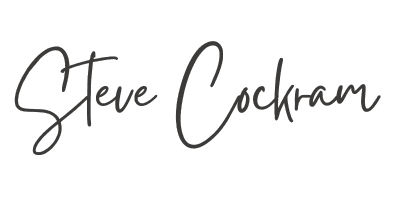Newsletter
/
Relational Intelligence at Work

Steve Cockram
on January 23, 2024
Hey, it's Steve Cockram here.
Welcome to the Relational Intelligence at Work newsletter where every Tuesday you’ll receive an email directly to your inbox from either Jeremie or myself.
This newsletter aims to support you on your personal growth journey, and to equip you with the skills and knowledge you need to excel as a leader.
One of the hardest things to do as a leader of a team or organization is to provide constructive critique in a way that encourages others and motivates them to improve.
We may have the greatest of intentions to help those around us, but what we intended as helpful “critique” can often be experienced as “criticism.”
So for today, I want to get into exactly how to deliver constructive critique in a way that helps others become the best version of themselves and doesn’t undermine them or their work.
Let’s dive in…
Firstly, critique and criticism are two entirely different things!
When someone criticizes you or your work it often feels deeply personal and leaves you feeling attacked and judged.
Constructive critique, on the other hand, can take many forms, but generally, it involves identifying the strengths and weaknesses of a work and providing constructive feedback on how it can be improved or why something won’t work.
When critique is done well, it helps the other person grow and improve while avoiding the negative connotations that are associated with criticism.
The key difference between them is that critique, when invited, can be objective, constructive, and helpful, while criticism feels personal, negative, and judgmental. When it comes to offering critique, your intent is not enough!
At the end of the day, critique is focused on being for someone and helping them improve their work or specific skill sets.
Now that we know what critique looks like, let’s get into how to use the power of critique to encourage others and help them become the best they can be.
HOW TO DELIVER CRITIQUE WELL: THE CONSTRUCTIVE METHOD
Just like anything else, learning to critique well is a skill. It takes time, effort, and lots of practice to get better.
So how does one go about getting better at providing critique? Should you just jump right in and start telling someone where they’re wrong?
Of course not!
The truth is, the most important part of critique happens before the actual critique itself.
For critique to work well, the person receiving the critique must be open and willing to receive it.
No matter how hard you try, if the person isn’t open to receiving critique, it will always be misunderstood and received as criticism.
So, ahead of time, the most important thing you can do is share the code word:
“Are you okay if I offer some critique?”
1. Share the Code word:
Remember, the remaining steps don’t matter if you don’t complete step one. For critique to be received well, the other person must be open to receiving it in the first place.
Always confirm with the other person before diving in with your critique.
2. Start with positive feedback:
Whenever you’re about to critique something or someone, ALWAYS begin by highlighting what the other person did well and what you appreciate about their work.
This sets a positive tone for the conversation and makes it a much better environment for the other person to receive constructive feedback.
3. Be specific:
Specificity is key. Be clear about what you did like… and what could be improved. General statements such as “You’re doing it wrong” lead to negativity and feel like criticism.
Highlighting specific areas for improvement will help narrow the focus for the other person.
4. Use “I” statements:
Use statements such as, “I think it would be helpful if…” This takes the focus off of the person and puts it on the specific area of work that needs improvement.
Statements such as, “You need to do this or that…” lead to others putting their hypothetical walls up and are often not received well.
5. Ask for their perspective:
Critiquing should not be one-sided. If you want someone to take ownership of the quality of their work, ask them for their thoughts on the feedback you provided them.
A true dialogue allows them to share their ideas, they have to have the opportunity to critique your critique if they disagree with you!
6. Follow up:
After a constructive conversation where you’ve provided the invited critique, always make sure to check in and see how the other person is doing and how they’re progressing.
This shows you care about their growth and are invested in their success.
7. Offer suggestions:
Be specific for what needs improvement and how to fix it. Saying something is “wrong” or “not good” without explaining how to fix it is a recipe for disaster.
Specific suggestions for improvement help empower people to make the necessary changes and move forward with clarity.
8. End with encouragement:
Honest critique is not easy to give or receive. Always aim to end your critique on a positive note.
Express confidence in the person’s ability to grow and improve and provide encouragement every step of the way.

Learning to implement the constructive method within your team and organization is perhaps one of the most powerful things you can do to improve the relational dynamics in your workplace.
But words are only part of the equation…
An Important Note on Tone and Tact
One of the most important factors in delivering critique is how you do it. The words can be spot on, but they won’t hear what you’re trying to say if the tone is wrong.
Tone is how you say things, like the attitude or feeling you convey when you speak or write. It’s essentially the “vibe” you give off with your words whether you sound happy, sad, angry, or sarcastic.
Your tone affects how people receive and understand what you say, and it’s crucial to be aware of it to communicate effectively.
Tact is the ability to say or do something that doesn’t upset or offend people. Tactful people have a way of navigating tricky or sensitive situations without causing drama or hurting feelings.
It’s said that tone makes up 35% of how people experience our communication, while the rest is 10% words and 55% body language.
A person who understands their tone and tact and uses it well has a better chance to crack the relational codes of others and deliver a critique that is received well.
On the other end, if someone doesn’t understand their tone and how they sound, they are going to have a hard time connecting and communicating with others.

What’s it like to be on the other side of you?
Do you know what you look like or how you sound when you critique someone else?
Even if the words are constructive, if the tone and body language are hostile or aggressive, it can make the other person feel attacked and become defensive.
For example, crossing arms, leaning forward aggressively, or rolling eyes while giving feedback can make the other person feel judged or even rebuked.
On the other hand, maintaining open body language, such as facing the other person directly, maintaining eye contact, and using a calm and collected tone of voice, can help the other person feel respected and listened to, even if the critique is less than positive.
Important Lessons to Come Away With:
Offering critique without receiving an invitation will likely be experienced as criticism.
Delivering a critique well often comes down to body language and tone, not necessarily the words you use.
When relational dynamics are off and issues from the past are unresolved, critique will invariably be experienced as criticism.
Whether you’re leading a team or not, critique is one of the most important skills you can learn in business and life.
The bottom line is… people need to know you’re for them, and they must have experienced it in the past to receive your critique well in the present.
That's all for today's message. I hope you enjoyed!
Until next time,
Cheers from London!

P.S.
In theory, we've never been more connected in a digital world today.
Yet, in a strange paradox, we've never been more disconnected.
The Communication Code will give you the tools and resources to rekindle and strengthen your relationships.
Grab your copy below:
Relational Intelligence is the science of highly-functional relationships (HFRs). Learn how to navigate and manage your interactions with others effectively.

